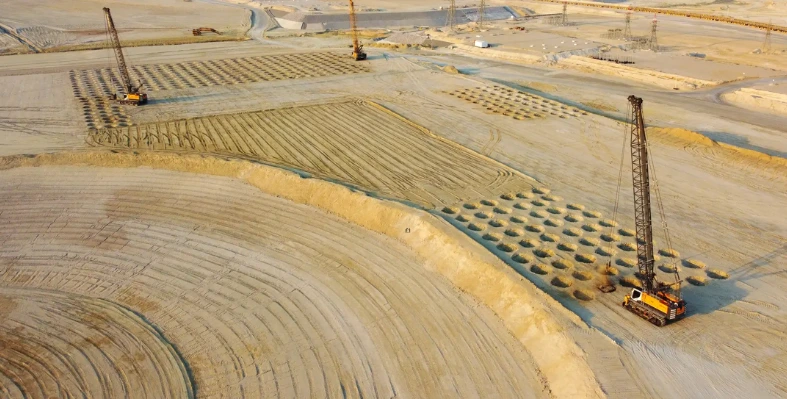The Sabah Al Ahmad Sea City project in Kuwait’s Al Khiran region is an extraordinary feat of engineering, distinguishing itself from other artificial developments in the Gulf. Instead of relying on land reclamation, this groundbreaking initiative has carved approximately 300 kilometers of canals directly into the desert and filled them with seawater. With a construction timeline spanning 46 years and divided into ten phases, the project aims to house 250,000 residents. Upon completion, it will feature a comprehensive infrastructure network, modern utilities, and luxurious residential and commercial buildings.
One of the significant challenges of this project is ensuring stability for structures built on loose desert sand. To address this, dynamic soil compaction has been employed as a solution to stabilize non-cohesive soils. This method enhances soil density and minimizes the risk of liquefaction during earthquakes, making it particularly effective for desert environments. Steffen Fuchsa, head of the duty-cycle crane division at BAUER Maschinen GmbH, emphasizes the suitability of this approach for large-scale projects like this.
Dynamic soil compaction involves using 25-tonne steel pounders, which are lifted by duty-cycle cranes and dropped in controlled free-falls of up to 15 repetitions. These impacts create craters while compacting deeper soil layers through kinetic energy. The process is automated, with operators setting parameters such as compaction levels and impact counts into the crane’s intelligent control system. After the initial craters are formed, the gaps between them are compacted in a secondary phase to ensure uniform soil stability. The craters are subsequently backfilled and further compacted to create a load-bearing surface ready for construction.
BAUER Maschinen GmbH’s duty-cycle cranes, such as the MC 96, are specifically designed for the high dynamic loads required for this process. These cranes are engineered with solid steel components in their upper and undercarriages and are powered by robust diesel engines that deliver high performance. According to Fuchsa, the hydraulic system in these cranes efficiently transfers power to the hoists, making them optimal for dynamic soil compaction.
The scale of the Sabah Al Ahmad Sea City project presents unique challenges, requiring equipment to operate 24/7 to meet tight deadlines. Kuwait’s extreme desert conditions, including intense heat and pervasive sand, further complicate the task. To counter these issues, protective measures such as reinforced sealing and cooler guards have been installed on the cranes, ensuring consistent performance even in harsh environments. Rope alignment during operation is another challenge, as improper winding can lead to excessive wear and high costs. Bauer has addressed this with innovative solutions, including an active rope tightening system and a winding assistant, which are exclusive features of the MC series and significantly enhance operational efficiency.
Currently, six BAUER MC 96 duty-cycle cranes are in use on the project, showcasing their ability to overcome the demanding requirements of one of the most ambitious engineering undertakings in the Gulf region.




